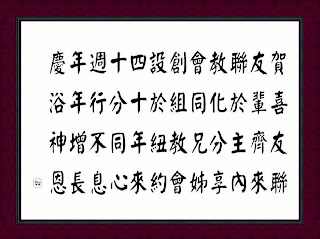
57 Cent Church
A little girl stood near a small church from which she had been turned away because it was 'too crowded.' 'I can't go to Sunday School,' she sobbed to the pastor as he walked by.
Seeing her shabby, unkept appearance, the pastor guessed the reason and, taking her by the hand, took her inside and found a place for her in the Sunday school class. The child was so happy that they found room for her, and she went to bed that night thinking of the children who have no place to worship Jesus.
Some two years later, this child lay dead in one of the poor tenement buildings. Her parents called for the kindhearted pastor who had befriended their daughter to handle the final arrangements.
As her poor little body was being moved, a worn and crumpled red purse was found which seemed to have been rummaged from some trash dump.
Inside was found 57 cents and a note, scribbled in childish handwriting, which read: 'This is to help build the little church bigger so more children can go to Sunday School.'
For two years she had saved for this offering of love.
When the pastor tearfully read that note, he knew instantly what he would do. Carrying this note and the cracked, red pocketbook to the pulpit, he told the story of her unselfish love and devotion. He challenged his deacons to get busy and raise enough money for the larger building.
But the story does not end at here....
A newspaper learned of the story and published It. It was read by a wealthy realtor who offered them a parcel of land worth many thousands.
When told that the church could not pay so much, he offered to sell it to the little church for 57 cents.
Church members made large donations. Checks came from far and wide..
Within five years the little girl's gift had increased to $250,000.00--a huge sum for that time (near the turn of the century). Her unselfish love had paid large dividends.
When you are in the city of Philadelphia , look up Temple Baptist Church , with a seating capacity of 3,300. And be sure to visit TempleUniversity, where thousands of students are educated.
Have a look, too, at the Good Samaritan Hospital and at a Sunday School building which houses hundreds of beautiful children, built so that no child in the area will ever need to be left outside during Sunday school time.
In one of the rooms of this building may be seen the picture of the sweet face of the little girl whose 57 cents, so sacrificially saved, made such remarkable history. Alongside of it is a portrait of her kind pastor, Dr. Russell H. Conwell, author of the book, 'Acres of Diamonds'.
This is a true story, which goes to show WHAT GOD CAN DO WITH 57 CENTS.
(Recycled Internet Message 回收再用)


